Drawing for beginners: Learning plants
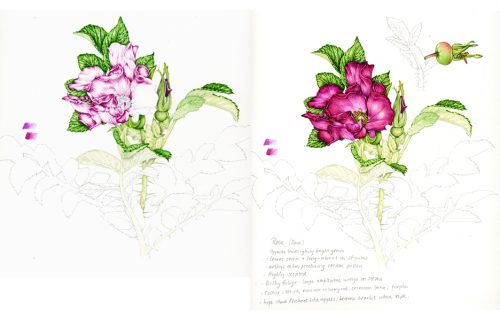
I was recently asked to write a few words about how drawing plants helps you to learn about them for a lovely new book I’ve illustrated, and how even if you’re not confident, or have never tried drawing from life before, turning your hand to a bit of basic botanical illustration can be very worthwhile.
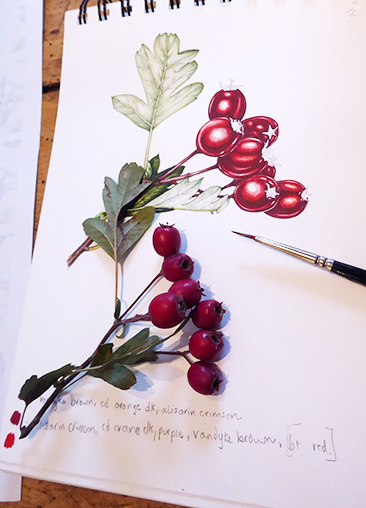
The (slightly altered) text below appears in Foraging with Kids, by Adele Nozedar; published this month by Nourish books, and illustrated by me.
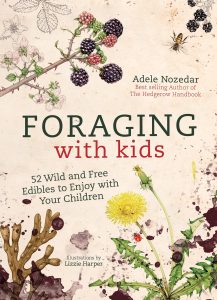
Why draw plants?
If you’re not convinced that you’re good at identifying plants, a brilliant way to learn about them is to draw them. It doesn’t make any difference whether you can scarcely hold a pencil, or if you’re the second Leonardo da Vinci; it’s the looking that’s involved that counts.
I’m illustrating this blog with pages from my sketchbooks, photos of work in progress, and finished illustrations; if you’re just starting it it may take a while to get your eye in and to feel confident enough to play about with watercolour, but as with all things, if you do it enough you’ll get better and better at drawing! And once you can draw, the painting is the easy part.
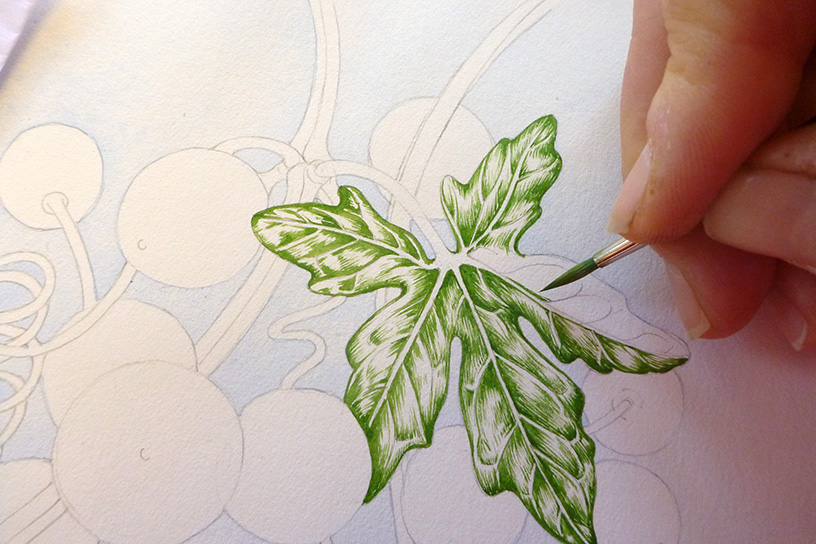
Working on a watercolour of Black Bryony for Jersey Post. For a blog on the steps involved in creating this painting click here
Drawing plants is also a really good activity to do with children, encouraging them to draw what they actually see rather than what they think is there can be amazingly rewarding; if you compare a child’s picture of an imagined flower (one leaf, big central disc, lots of rounded petals) with one that the same child’s done when staring at a plant you’ll see an enormous difference.
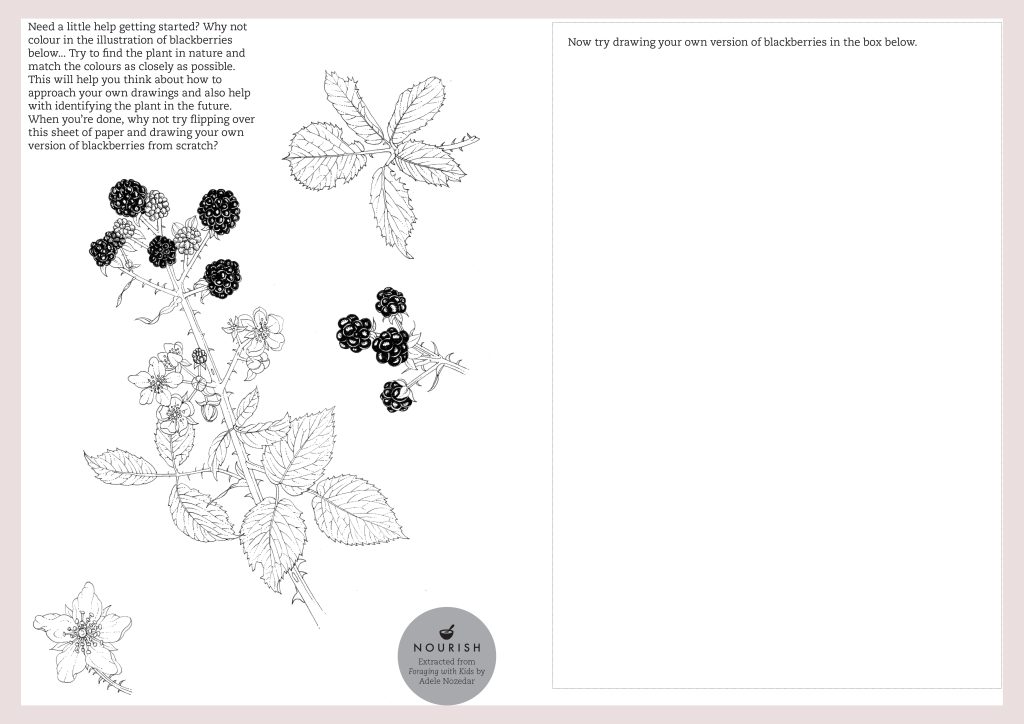
Setting out to draw
So how do you go about drawing a plant?
First, get paper and pencil and a rubber together. A magnifying glass can come in handy too, and a plant identification book might be helpful so you can name the plant once you’ve drawn it. Go and find or pick a plant that interests you, and be sure to consider the whole plant, down to the base of the stem. Set yourself up somewhere and make sure you won’t be distracted for half an hour. Go on, make a cup of tea too.
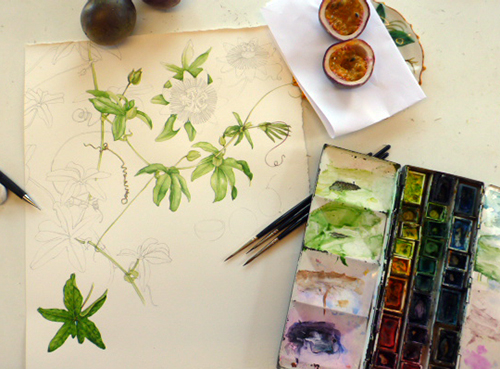
Mapping out the subject
Start off by doing a really rough shape of the plant in very light pencil on the page, a suggestion of where each leaf is and where the flowering parts are. Try to look at things like the shape of the leaves, how they attach to the stem, how many petals or smaller flowers are involved in the flower, what the buds and fruit look like.

Once you’ve got this light “map” down, you can work into the detail.
Fitting form to function
Look to see what the edges of the leaves do, are they smooth or have they got teeth; what direction do the leaf veins go in; what shape is each petal; is the leaf smooth or hairy; has the stem got spines on or is it smooth? Add these layers of information to your drawing. Have a think about why these traits might be there as you go along; is the flower coloured that way to attract insects? Why does the plant have to arm itself with thorns? What’s the point of encasing a seed in a hard wooden nutshell? You’ll have to stare and stare to sort out some of these details; this is where the learning happens because as you look so intently you find you unconsciously learn how the plant is put together.

Use the magnifying glass to sort out the details of things like the middle of a flower or the tiny veins on a leaf. Feel free to pull the plant apart as you draw it; you’re figuring out how it works so you need to break it into its elemental parts. Don’t forget to look at the roots too, if you can. In some species there are identifying features that you can only find if you look underground.
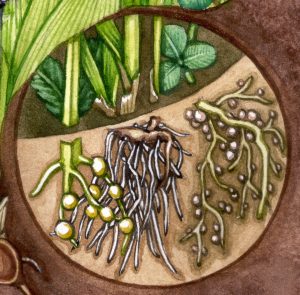
An analogy would be to think of a mechanic at work with a motor, tinkering and taking it apart to see what’s going on with each smaller bit of the whole engine. By understanding each element of a plant you learn how it works as a whole organism.
The joy of discovery
I love this part of drawing, and find out incredible facts that blow me away. I remember drawing a mallow flower once and finding out its seeds were held on a tiny point, like a hoop-la stick with donut shaped rings on it, and each individual seed was shaped like a tiny slice of a donut.
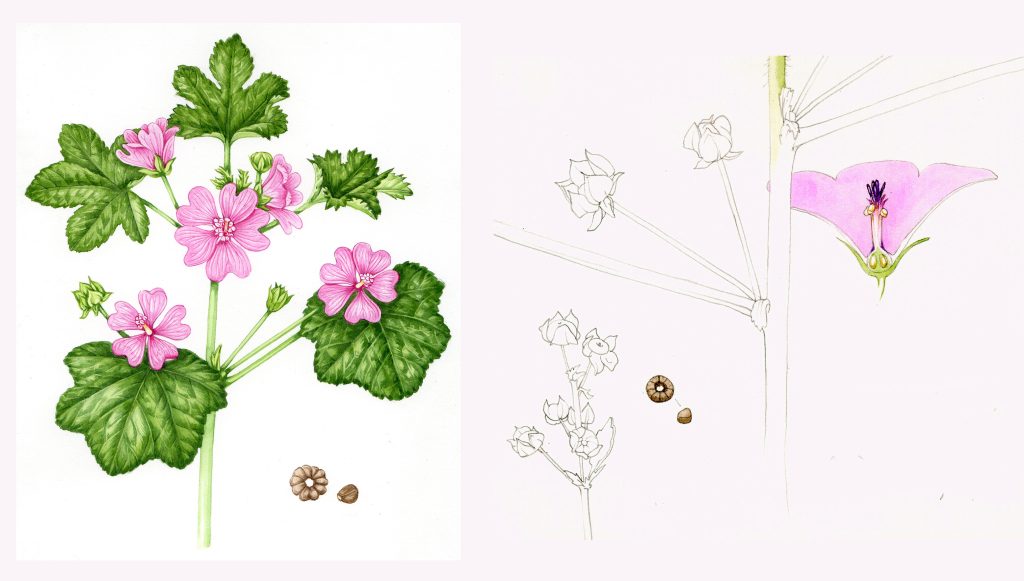
I loved figuring out that each petal of the Wood sorrel flower has the most delicate dark purple lines on it which follow the veins that supply the petal with water and nutrients, and realising that the common daisy flower is actually two sorts of flowers; tiny yellow ones in the centre and each white petal is a perfect little white flower in its own right. (Go on, get that magnifying glass out, you’ll see what I mean!) These things fill me with joy and wonder, and I’m sure your own drawing discoveries will do the same for you.
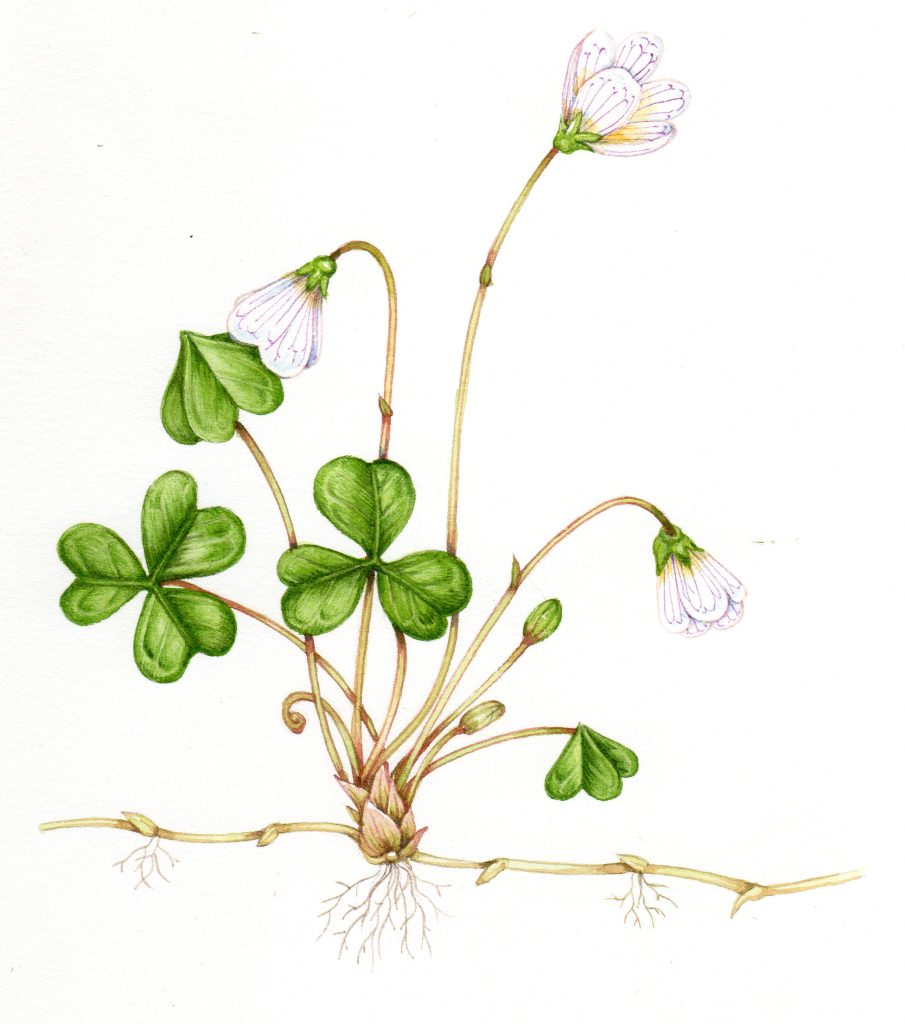
Drawing as an aid to species identification
Once you’ve drawn your plant, even if the resulting picture isn’t a thing of beauty, you’ll find you can instantly recognise that plant again. You’ll have learnt so much more about it than you ever could have done by referring to a book. You’ll know it inside and out, and this is because you’ll have spent so long with it, staring at it, looking it, understanding it. All these things are required when you draw a plant, and that’s why sketching plants is such a brilliant way to improve your plant identification skills. Drawings by a beginner can hold just as much information as a drawing done by an expert.
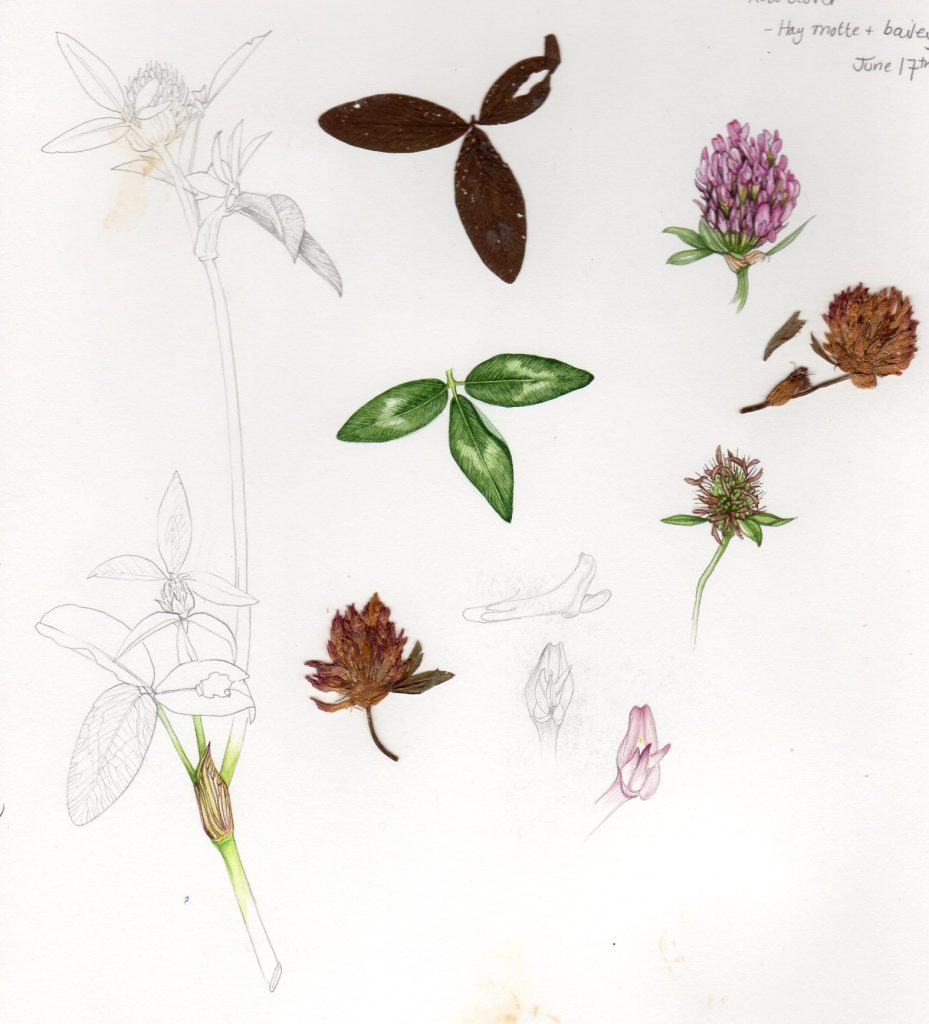
Eat your subject matter!
Even better, if you’ve drawn an edible plant you can eat it when you’re done! This particularly appeals to the younger artists amongst us, at whom Foraging with Kids is aimed.
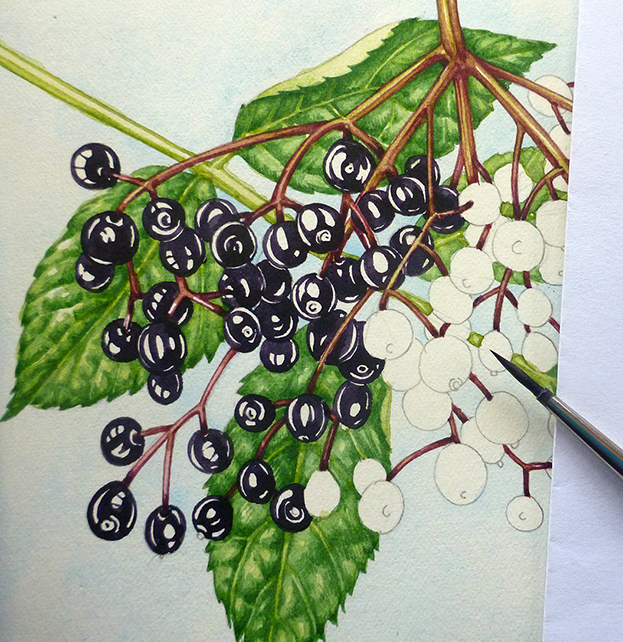
Don’t worry about the results: just enjoy it!
One last thing; do NOT get hung up on whether or not you’ve done a good picture. The drawing that is the result of these observations is of secondary importance. It doesn’t matter. No-one will judge you, no-one will criticise you (except for yourself). The wonder and the glory of it all is you’ve been lost in concentration, you’ve been absorbed by a flower, you’ve been learning through looking, you’ve been drawing. And the best bit is the more you draw, the more you learn about plants and plant identification, and the better you get at drawing. Come on, what’s not to like? Get those pencils sharpened and head out into the garden (with or without the children) right away!
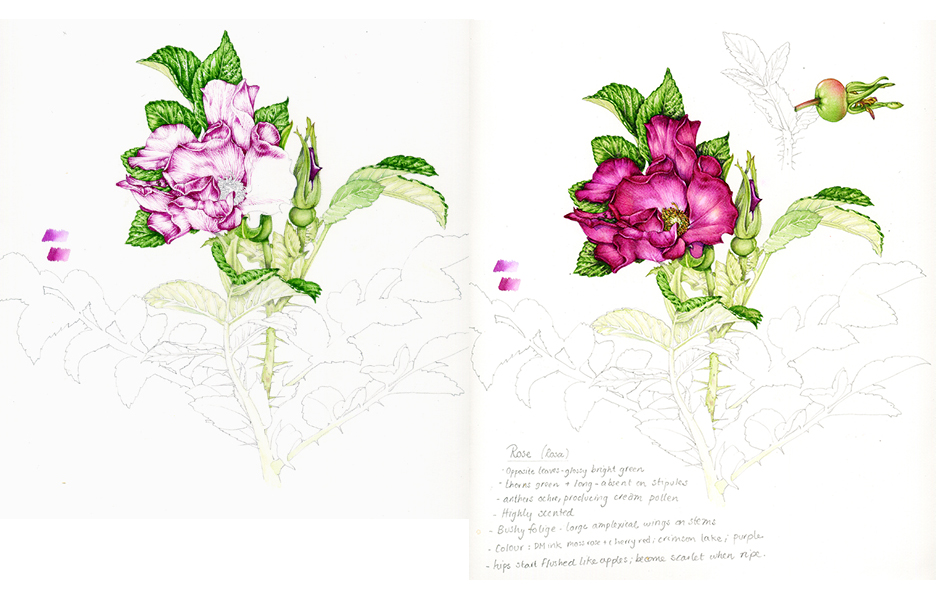


Is there a resource for plant identification if you have no idea what it is? Other than going through four zillion google images and hoping you get lucky (LOL but I’ve done it multiple times in desperation)? I’ve seen something online for insects.. you put in characteristics and it gives you a list of possibilities which cuts the process down significantly.
There are indeed some. I use ispot https://www.ispotnature.org/ which has online keys, and galleries of related species. I know there are apps you can get on the phone which will help you id a plant from a photo, but annoyingly I cant remember what they’re called right now. A good place to ask is the BSBI https://bsbi.org/identification who know about these apps and, I think, have collaborated on some. Twitter is lovely too, I often have my queries answered by cheerfully willing botanists. ANd it is TOTALLY normal to struggle with plant id. It can be really tough, specially with plants you’ve not seen before; or with some of the killer families (dandelions, hawksbeard and hawksbits…dont get me started!) There are also good resources on Youtube; I’ve watched and signed up for various teaching videos from an amazing young botanist, Joshua Styles https://www.youtube.com/channel/UCEHq4t89EB5R0ss8Z65vZyw, his videos are always worth a look.
Amazing inspirational Lizzie Harper.
Love love love your work and enthusiasm
Aww Jannine, Thank you! x
Hi Lizzie Harper,
I didn’t know your work until this morning! It is absolutely the most gorgeous thing I’ve ever seen. I am new to the proper study of Botany. You could call me a neophyte!
I would love to come on one of your courses for beginners.
Thank you for sharing your perceptions of the plant world so beautifully.
Hi Roz, what a gorgeous and generous comment, thanks so much for that. Made my day. And how lovely to be a botanical neophyte, enjoy the journey! xxx
Hi Lizzie! I am teaching a 3rd/4th grade mix–eastern US–at a classical Christian school. Our Science department head gave us carte blanche for our lower school Science. We have a neat textbook but were told we can use it as a resource. She said, “Build wonder and amazement at what God created. Get ’em outside gathering, drawing, observing, digging…. ” Our first unit is Plants. Your work delights and amazes me! Do you know of a similar resource I could use with my 8-9-year-olds? I am planning to do prints and sculpts and drawings, but I need more ideas. Not looking for cut-and-paste worksheets. Boring. 😊
Hi Paige, Im not sure about educational resources, and know how dull a lot of the free content can be. I would say maybe buy some flower and animal identification guides, and go on nature hunts together, bringing stuff back to the classroom to work from? Although Im sure yorue doing that already… Hmm. If I come across anything Ill let you know. Lucky kids having such inspirational learning, and so much time out of doors!
Yours
Lizzie